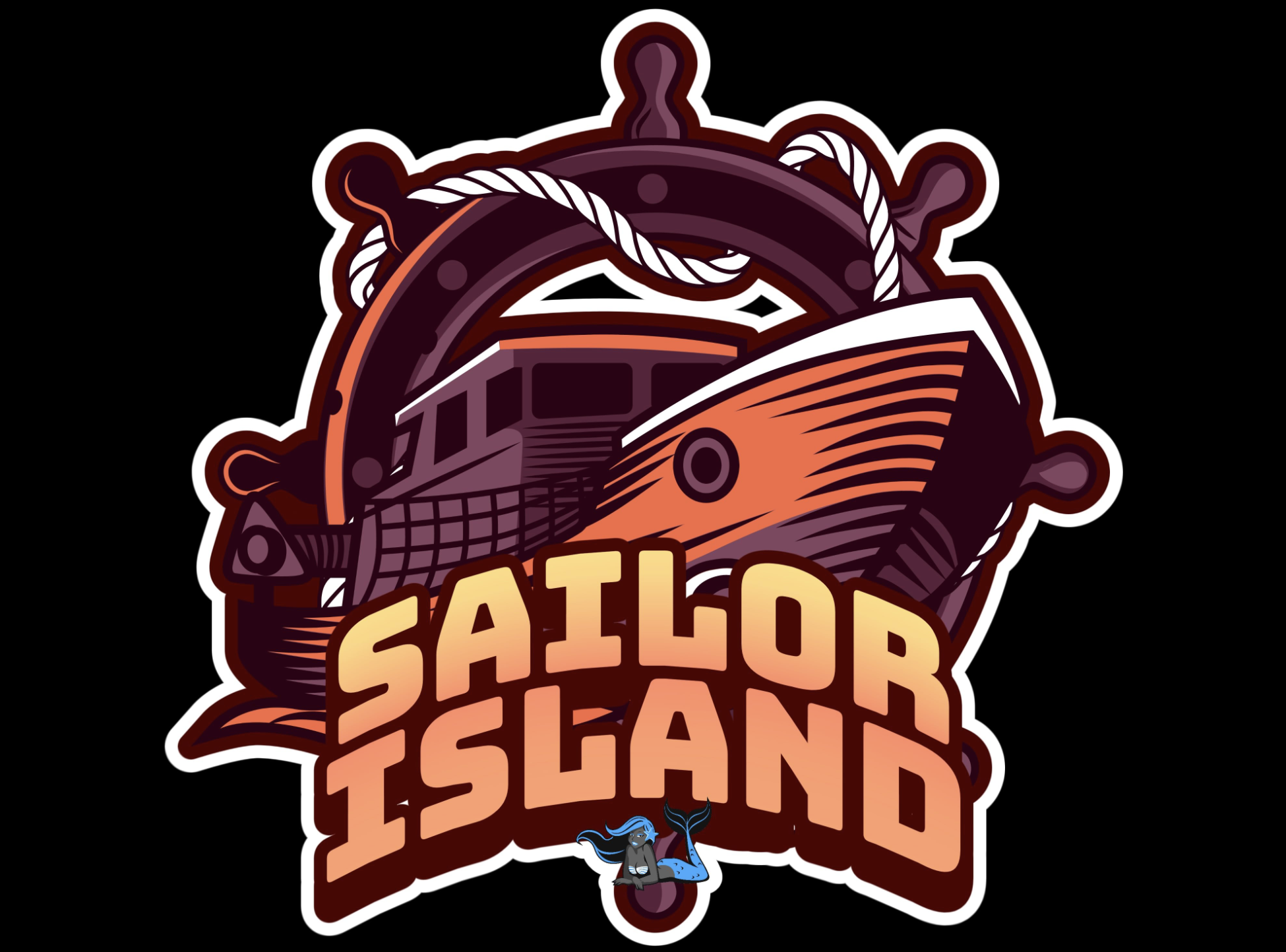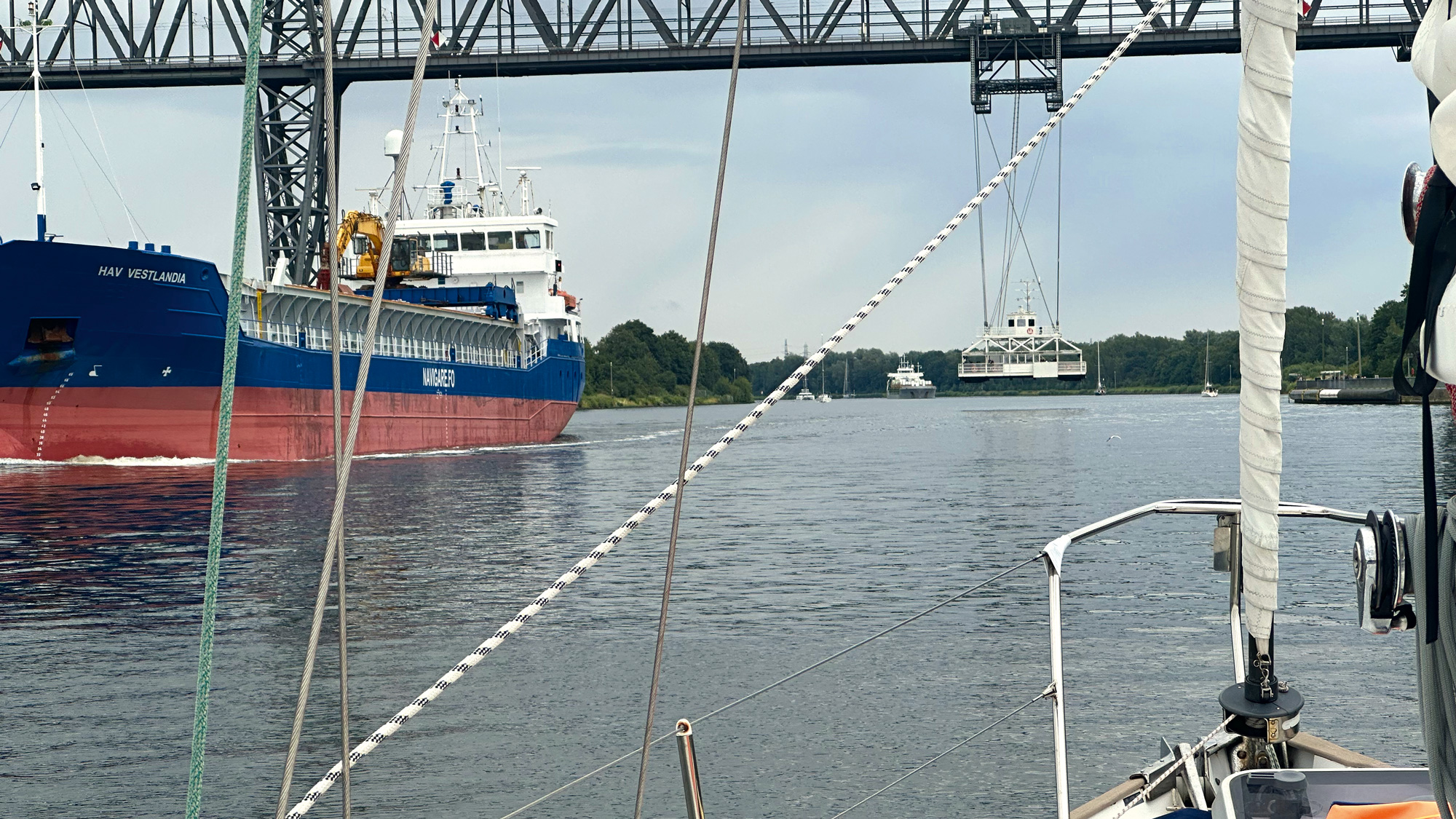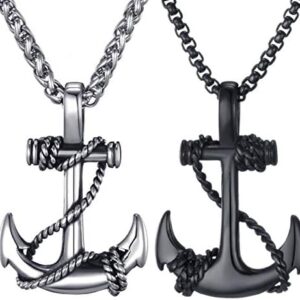The Kiel Canal offers a handy shortcut between the North Sea and the Baltic, or because the Germans name it, the Nordsee and the Ostsee. We Europeans name it the Nord-Ostsee-Kanal, or NOK for brief, whilst you Brits simply name it the Kiel Canal.
Going from west to east you enter the Kiel Canal through the Elbe River the place you enter the locks at Brunsbüttel and you permit the Kiel Canal at Holtenau locks the place you proceed into the Kieler Förde. As a result of shortcut of roughly 240 miles, 27,000 business vessels and 12,000 yachts transit the Kiel Canal yearly.
Yachts are solely allowed to make use of the canal throughout sunlight hours, which offers the chance (throughout summer time) to make the passage in someday.
The canal is 53 miles lengthy, 90m extensive and 11m deep. These dimensions accommodate business vessels as much as 235m LOA and with a most draught of 9.5m. The visitors, each business and yachts, are managed via VHF and lots of mild alerts on the locks in addition to alongside the channel. There are 10 bridges crossing the Kiel Canal all of which have a 40m air draught and it’s additionally traversed by 14 ferries together with a fantastic and distinctive ‘hanging’ ferry.

Harry and Liz’s Nicholson 35, Woman Blue, is well-maintained and has severe miles beneath her keel. Photograph: Harry Dekkers
VHF communications
The transit of the Kiel Canal is definitely fairly easy and simple, though it was our expertise that communication by the lock masters actually trusted the lock grasp on obligation. Some had been extra pleasant and understanding in the direction of yachts than others.
There are 4 VHF channels that you should actively use: one for every lock and two between the locks. The decision indicators from west to east are very initially known as Kiel Kanal I (VHF 13) for the Brunsbüttel lock space, Kiel Kanal II (VHF 2) to Breiholz, Kiel Kanal III (VHF 3) and Kiel Kanal IV (VHF 12) for the Kiel-Holtenau lock space.
Formally you need to report and request permission to enter the locks however no reporting obligation applies for Kiel Kanal II and III. It was our expertise that the monitoring of the visitors lights had been extra necessary.
Article continues under…
Nearly each middle-aged man desires of shopping for a ship and happening a crusing journey. The sense of freedom,…
5 hours into our madcap race, we feared that we weren’t going to make it. We knew the percentages had been…
When calling one of many channels you do get a reply, however not all the time as detailed as you want to. The anticipated ready time for example was not all the time communicated, which is kind of pertinent for yachts within the ready areas exterior the locks, particularly within the Elbe River with as much as 4 knots of tidal stream.
The ‘not all the time variety’ communication that we typically encountered is likely on account of the truth that the 4 VHF channels are utilized by each business vessels and yachts and are due to this fact very busy.
Almanacs just like the Reeds Almanac present a lot of the related data. As well as you will discover useful particulars on completely different web sites like www.gdws.wsv.bund.de. Each sources present data on the sunshine alerts on the locks, the precise mild and their that means alongside the canal, the canal dues, most speeds and extra.

A set of small-scale charts and pilot books on board meant they nonetheless had the mandatory data and particulars. Photograph: Harry Dekkers
Woman Blue beneath engine
Our Nicholson 35 from 1976 remains to be fitted out with the unique Mercedes OM636 with hydraulic drive, with two drive belts. One is driving the uncooked water pump, and one is driving the alternator and the inner cooling system pump.
After we purchased the boat some years in the past the engine appeared in superb working situation (after an overhaul some years earlier than) besides that the completely different techniques had been fairly outdated. We due to this fact fully renewed mainly all of the techniques together with the instrument panel, gas system, oil filter housing, water-cooling techniques and the exhaust.
The brand new instrument gauges included oil strain, water temperature and voltage in addition to a warning mild for low charging. This proved to be very important data in the course of the occasions that unfolded…

Lack of the chart plotter
We approached the Kiel Canal in darkness after we left late afternoon the day earlier than from Gedser, which is on the most southern level of Denmark and roughly 65 miles east of the Holtenau lock within the Kiel fjord. After a brief wait and with the solar beginning to rise we had been allowed in.
As we had sailed by means of the evening we determined to make a cease at Rendsburg Marina (a comfortable, comparatively small marina with good services) at about three hours’ sail west into the canal from the Holtenau lock.
Subsequent morning earlier than we left, I modified the Navionics micro SD card from the Baltic to UK/Holland to keep away from any surprises relatively than doing it out in the midst of the North Sea. I used to be very joyful I did so as a result of, for causes unknown, at that second each playing cards bought corrupted.
This meant that we needed to do some old style prep on paper. As a back-up we used a standalone GPS, the small-scale Imray C70 Southern North Sea Passage chart and the Reeds Almanac for detailed Kiel Canal, harbour and approaches plans. Nothing unsuitable with that, though it required a bit extra preparation and safer checking of navigation aids like buoys and lighthouses.

Entry to the engine through the cockpit locker was made simpler by every thing being in good order already. Photograph: Harry Dekkers
Lack of propulsion
The principle problem – in distinction to the minor problem of shedding the chart plotter – was a damaged drive belt. As soon as we had been en route within the Kiel Canal, for the second half in the direction of Brünsbuttel, we out of the blue heard an ungainly ‘plonk’ sort of sound from beneath the cockpit flooring the place the engine is positioned.
We had no concept what it was and it bought us a bit anxious. I seemed on the engine instrument panel, which confirmed the purple alternator mild burning. This was a primary indication that one thing was unsuitable.
Though you may proceed utilizing the engine when the alternator will not be working anymore, I additionally knew that the identical belt runs the inner cooling pump. Roughly instantly after that, the cooling water temperature started rising, which confirmed the primary evaluation that certainly the belt was damaged. With out visually checking the engine our precedence now was to cease the engine to keep away from overheating with all attainable penalties.

Fellow Dutch yacht San Michele, a Winner 1220, took Woman Blue in tow whereas Liz steered and Harry labored on the engine. Photograph: Harry Dekkers
The best choice was to drop anchor and to switch the belt. We weren’t, nevertheless, having fun with a leisurely sail on open water however had been transiting one of many busiest business canals on the earth.
Stopping the engine would imply that we might ‘free float’ within the channel, which wasn’t a cheerful thought.
With the engine on idle and slowly lowering pace on the starboard aspect of the channel I contacted the Kiel Canal authorities on VHF to tell them about our place, referring to the space marker we had simply handed, our scenario on board and at last our intentions.
The communication was very quick and environment friendly, and it was agreed that we must always drop anchor.
The following step was to organize the anchor, which meant eradicating the safety pin from the anchor and undoing the back-up line (which may simply have been reduce if needed). We had been fortunate to have a light-weight head wind at that time which made it comparatively straightforward to drop the anchor whereas nonetheless near the starboard aspect of the channel.

Harry and Liz take pleasure in a well-earned beer within the cockpit. Photograph: Harry Dekkers
From that second on our ‘emergency’ was beneath management: we had been at anchor; the canal authorities had been conscious of our scenario and will handle transport and I had time to switch the belt. The scenario turned much more ‘relaxed’ after a yacht crusing in the identical route (which had heard our communication over the VHF) supplied us a tow.
The tow line was rapidly rigged, the anchor retrieved, and we had been on our approach once more. After informing the authorities of the brand new scenario I took the spare belt and a few instruments, cleared the cockpit locker and went to work whereas Liz steered to observe our ‘tug’.
Restoration
Though the house within the cockpit locker and across the engine is a bit cramped and the engine being round 80ºC, the altering of the belt was fairly easy. As a result of I do a lot of the upkeep myself, I knew what instruments (and sizes) had been wanted. After 20 minutes or so the work was carried out, and we had been in a position to begin the engine. The purple warning mild was out, and the temperature gauge began rapidly to come back all the way down to regular ranges. We contacted the tow on VHF Channel 77 (which we agreed to make use of on our handheld VHFs), gave them an enormous thumbs up and disconnected the tow.
I knowledgeable the authorities that our engine was operational once more and the ‘emergency’ was cancelled. We then proceeded in the direction of Brünsbuttel, handed the locks and stayed the evening at Cuxhaven earlier than returning again to the Netherlands the following day.
A giant thank-you to the crew of the Dutch yacht San Michel from the Royal Yacht Membership (KNZ&RV) in Enkhuizen for offering the tow and offering us time to unravel the engine problem.

Harry and Liz’s Nicholson 35 Woman Blue again on her house berth. Photograph: Harry Dekkers
Classes discovered
Navigation: Guarantee you have got a back-up in case the digital chart system fails. We all the time have small scale charts and the Reeds Almanac on board, which labored advantageous.
Upkeep: Achieve data about your engine together with gas, charging, and cooling techniques as you may want it within the occasion of a breakdown. For that cause, it’s price doing as a lot of the upkeep as attainable your self.
Engine data: Be sure to have a correctly functioning instrument panel which incorporates temperature, oil and voltage/charging data. Primarily based on the panel data, I used to be alerted to the difficulty and was in a position to diagnose what had occurred with 99% certainty. I knew we needed to cease the engine to keep away from overheating.
Unusual sounds: Be suspicious of unfamiliar sounds. We don’t constantly have a look at the engine instrument panel, nevertheless it was the unfamiliar sound that made us achieve this.

The brand new engine management panel contains engine temperature, oil strain and alternator volts, in addition to revs and engine hours. Photograph: Harry Dekkers
Anchoring: Make it possible for your anchor is able to be launched at any time, particularly in confined waters the place you’re near land.
Communication: Proactively inform the native authorities through VHF. They will help the place needed and it avoids them beginning to ask questions while you’re busy fixing your issues.
Engine entry: It’s important you may attain the engine house simply. In our case it signifies that the cockpit locker have to be nicely organised (like hanging the shore energy cables and spare traces) to allow this with out having to dig your well beyond gathered junk.
Spares: It was a great reminder that we feature the mandatory spare elements together with belts for good cause. It’s additionally price carrying at the least two of every thing. Had the belt gone once more, and not using a second spare we might have been in a a lot worse place.
Loved studying this?
A subscription to Yachting Month-to-month journal prices round 40% lower than the quilt worth.
Print and digital editions are available through Magazines Direct – where you can also find the latest deals.
YM is filled with data that can assist you get essentially the most out of your time on the water.
-
-
- Take your seamanship to the following degree with suggestions, recommendation and abilities from our specialists
- Neutral in-depth critiques of the newest yachts and gear
- Cruising guides that can assist you attain these dream locations
-
Observe us on Facebook, Twitter and Instagram.













